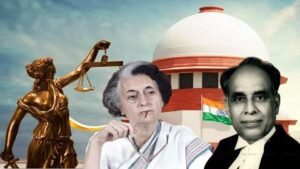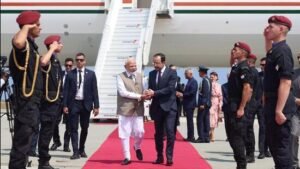
How Free Is Free Speech? – Legal & Constitutional Insight for CLAT 2026
Introduction
The right to free speech is a core democratic value enshrined in Article 19(1)(a) of the Indian Constitution. However, it is also one of the most debated and misunderstood rights, particularly when speech intersects with hate, religion, and social media. A recent editorial and response in *The Indian Express* reignited the debate surrounding the limits and legitimacy of free speech in India.
This issue is highly relevant for CLAT 2026 aspirants as it connects constitutional rights, Supreme Court rulings, hate speech jurisprudence, and the balancing act between liberty and public order.
Why in News
– The editorial “Whose free speech?” in *The Indian Express* defended controversial social media remarks made by Sharmistha Panoli as a valid expression of free speech.
– A counter column by Burhan Majid argued that the editorial misrepresented the legal scope of free speech, ignoring that hate speech cannot be protected under the Constitution.
– The debate raises questions about how legal principles must guide discourse and not selective political sentiment.
Point-wise Summary
- **Constitutional Basis**:
– Article 19(1)(a) guarantees freedom of speech and expression.
– Article 19(2) allows the state to impose reasonable restrictions, especially in cases of hate speech, incitement to violence, or threats to public order.
2. **Case Reference – Shreya Singhal v. Union of India (2015)**:
– The SC upheld free speech but carved out exceptions for incitement and hate speech.
– Distinguished between Discussion, Advocacy (protected), and Incitement (not protected).
3. **Key Argument by the Author**:
– Criticizes the overzealous police action against Panoli but also warns against normalizing hate speech.
– Disagrees with the editorial’s portrayal of Panoli’s remarks as harmless free speech.
– Argues that provocative speech against marginalised communities perpetuates real-world harm.
4. **Hate Speech vs. Free Speech**:
– The law doesn’t protect speech that incites hatred or violence.
– Advocating opinions or religion is different from inciting hostility.
5. **Judicial Trends**:
– SC has repeatedly upheld that freedom of speech cannot be used to justify targeted hate.
– Previous rulings like Amish Devgan v. Union of India and S. Rangarajan v. P. Jagjivan Ram affirm these limits.
6. **Misuse of Free Speech Defence**:
– The author highlights how political ideologies misuse “free speech” as a shield to justify bigotry.
– Cautions against reducing free speech to partisan narratives like “anti-national” or “anti-religion”.
7. **Call for Legal Consistency**:
– Law must be applied consistently to all kinds of speech.
– Legal action should not be driven by popular outrage but by principled legal standards.
Explanation of Key Terms (Notes)
– **Article 19(1)(a)**: Guarantees freedom of speech and expression.
– **Article 19(2)**: Provides grounds for reasonable restrictions including security, public order, decency, and morality.
– **Shreya Singhal Case (2015)**: Landmark judgment that struck down Section 66A of the IT Act, clarified what constitutes protected and unprotected speech.
– **Hate Speech**: Communication that denigrates a person or group based on race, religion, ethnicity, sexual orientation, etc.
– **Advocacy vs. Incitement**: Advocacy is opinionated speech; incitement involves encouraging harmful actions and is not constitutionally protected.
– **Reasonable Restrictions**: Legal boundaries to protect community interests while allowing individual liberty.
Relevance for CLAT 2026 Aspirants
– Understanding constitutional rights and their limitations.
– Awareness of key judicial pronouncements like Shreya Singhal, Amish Devgan.
– Analytical skills to interpret legal and ethical aspects of freedom.
– Importance of legal reasoning over populist interpretations.
– Key Current Affairs 2026 theme in polity and legal awareness sections.
Conclusion
The debate on free speech is not about choosing sides but about upholding consistent legal standards. The right to speak freely is vital, but it must be exercised responsibly, especially in a diverse society.
For CLAT 2026 aspirants, this issue is a masterclass in constitutional interpretation, legal limits of liberty, and the challenges of balancing individual freedom with collective harmony.






